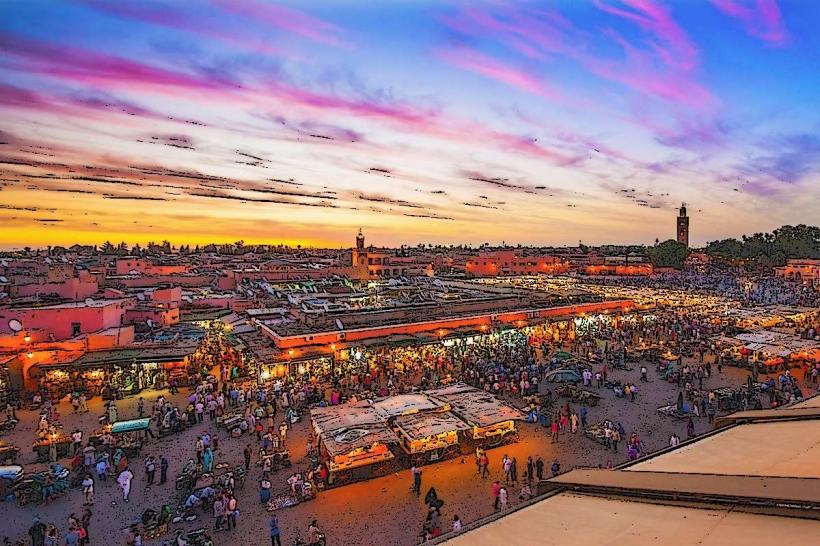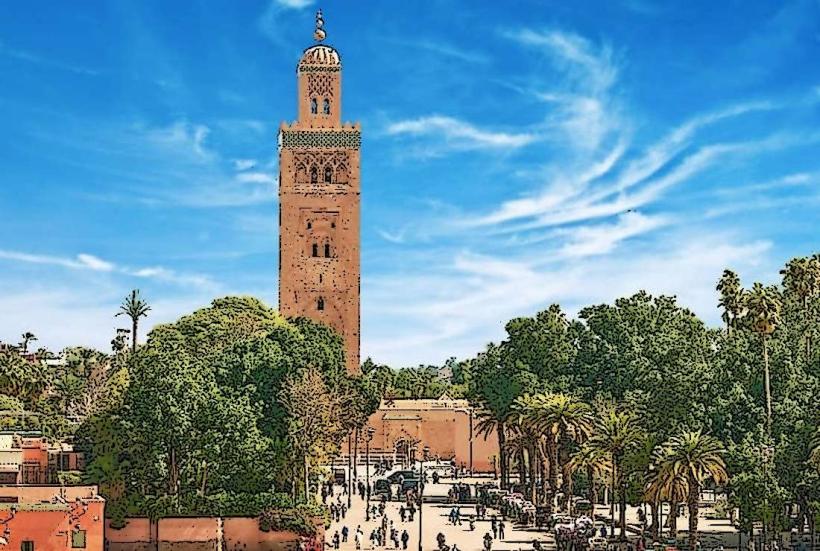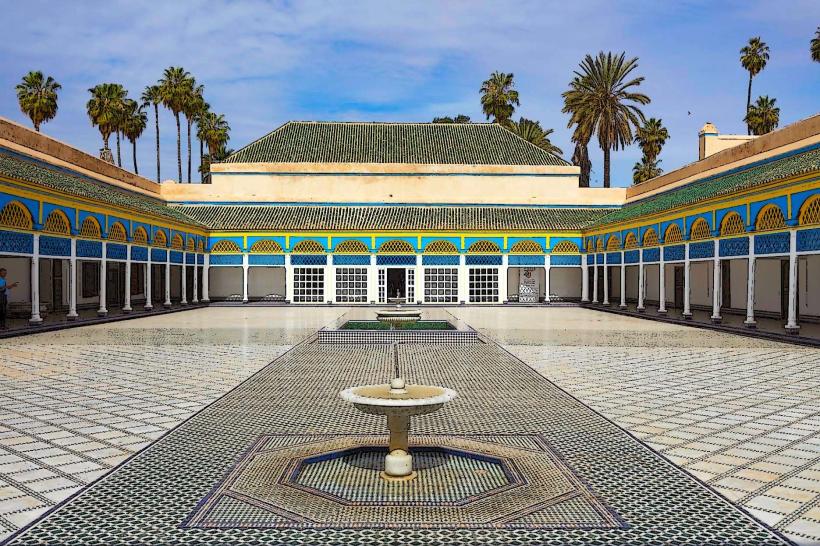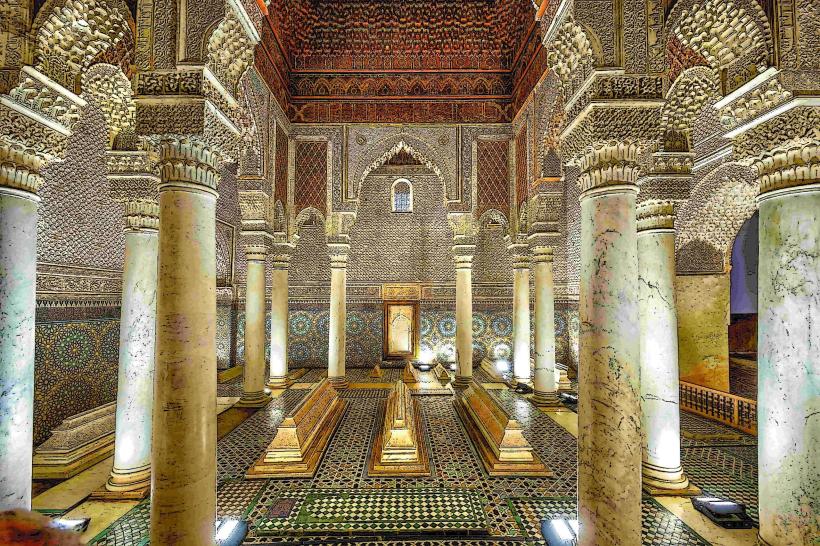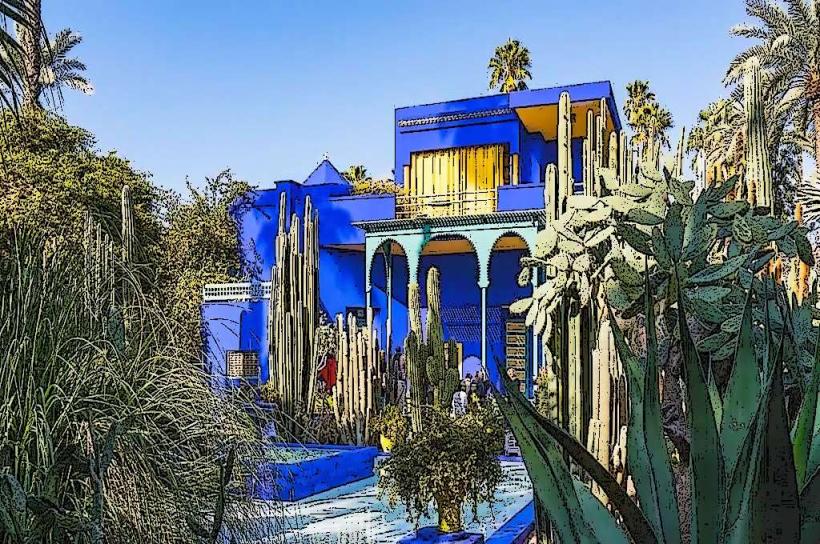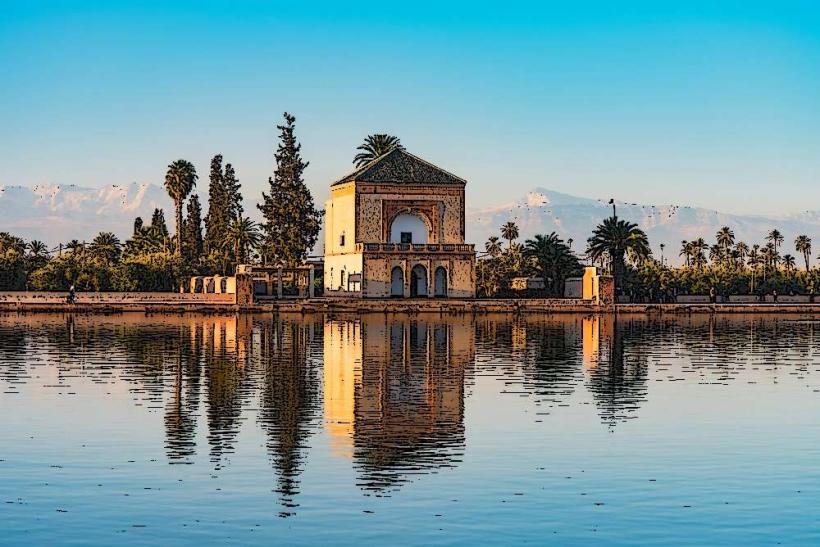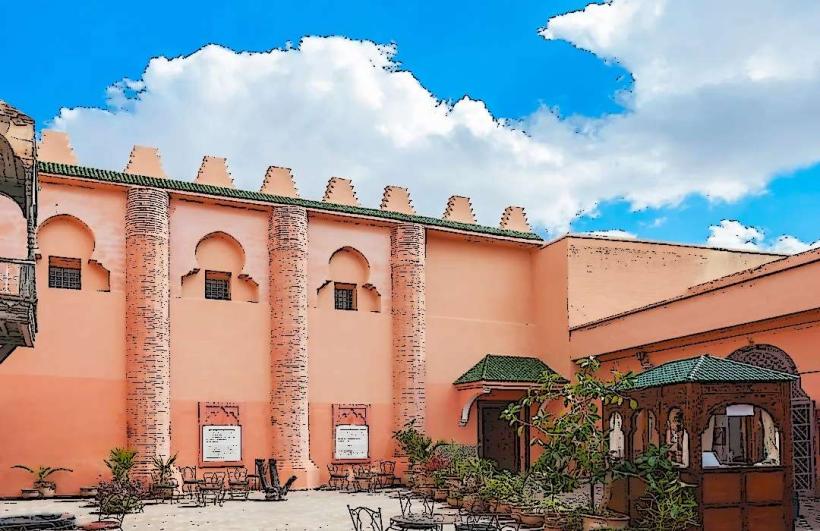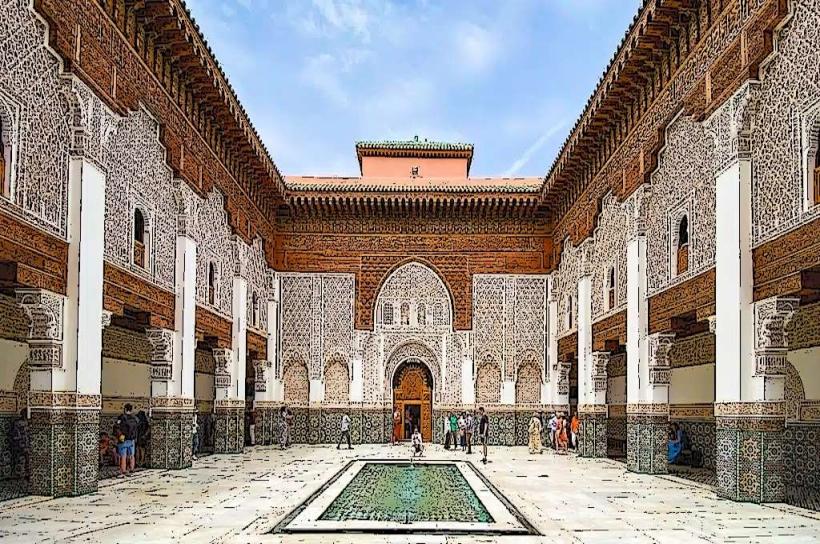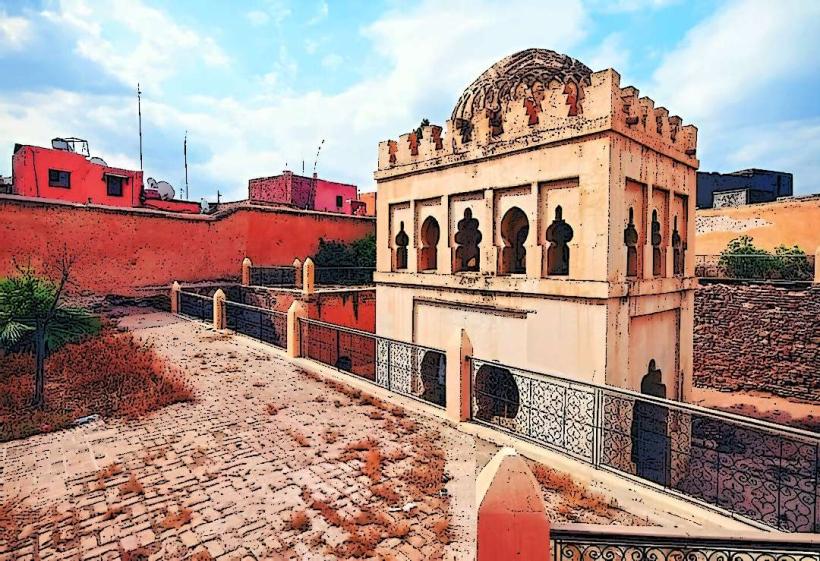Information
Landmark: El Badi PalaceCity: Marrakech
Country: Morocco
Continent: Africa
El Badi Palace, Marrakech, Morocco, Africa
Overview
El Badi Palace (Arabic: Al-Badiʿ, meaning “The Incomparable”) is a sprawling royal ruin in Marrakech’s Kasbah district, where sunlit walls still hint at its former grandeur, as a result built in the late 1500s by Sultan Ahmad al-Mansur of the Saadian dynasty, the palace once gleamed with tiled courtyards and stood among the most magnificent in the Islamic world.Only fragments survive now, yet their scale and intricate carvings still whisper of a time steeped in lavish wealth and grand imperial dreams, in conjunction with sultan Ahmad al-Mansur commissioned it after winning the Battle of the Three Kings in 1578, pouring the gold and silver he’d claimed from Portuguese ransom and West African trade into its creation.It took about 25 years to build, wrapping up sometime between 1593 and 1594, with the final stones set in site under a crisp autumn sky, equally important built as a lavish reception and ceremonial palace, it aimed to dazzle foreign dignitaries with gold-trimmed halls and showcase the sultan’s power and worldly taste.The design drew part of its inspiration from the Alhambra in Granada and other majestic palaces of Al-Andalus, weaving in the warm colors and intricate patterns that mark Moroccan style, simultaneously el Badi Palace sprawled across the landscape, its grand ceremonial halls arranged in perfect symmetry around a sunlit courtyard wide enough to swallow a slight market, loosely The palace stretched roughly 135 by 110 meters-about the size of a football field-and was ringed by smaller buildings and lush gardens, on top of that materials: Crafted with imported Italian marble, shimmering onyx, gold leaf, cedar from the Middle Atlas, and intricate zellij tiles-each piece echoing a sense of global reach and unmistakable luxury, generally At the heart of the palace lies a vast sunken courtyard, anchored by a 90‑meter‑long rectangular reflecting pool, flanked by four perfectly balanced sunken gardens and crossed by narrow, glistening water channels, likewise the Grand Pavilions-Crystal, Audience, Green, and Gold-stand at each corner, gleaming with intricate carvings and silken drapes, hosting everything from formal state ceremonies to quiet private gatherings.Private quarters housed apartments for the royal family and harem, their walls alive with intricate mosaics, carved stucco, and painted cedar that carried a faint scent of resin, while subterranean Chambers: Hidden tunnels and dim stone rooms beneath the building, once used by servants or for storing supplies, with a few still open to explore.Zellij decorative elements feature intricate geometric mosaics, with tiles stretching across the floor and climbing the lower walls in a shimmer of glazed color, on top of that carved stucco covered the upper walls and ceilings, alive with Quranic verses, flowing arabesques, and flowers curling like vines in plaster.Cedar ceilings glow with vivid plant motifs, a few brushed in gold that catches the light, along with fountains, set here and there, cool the air and fill it with a soft, steady splash-an essential touch in the Islamic garden tradition.The Saadian dynasty began to crumble after Ahmad al-Mansur died in 1603, its once-shining courts growing quiet and nippy, to boot over time, the palace stood empty, its echoing halls gathering dust.In the late 1600s, Sultan Moulay Ismail tore El Badi apart, hauling away its marble slabs, carved wood, and gleaming metal to build his current capital in Meknes, alternatively neglect and ruin took hold; once just a hollow shell, the site crumbled, dust gathering in its corners.Earthquakes and the unhurried grind of time have worn it down to a towering ruin, yet you can still picture its once-sweeping arches and proud walls, besides today, the site holds onto its history with crumbling outer walls, fragments of pavilions, a quiet courtyard, and shadowy underground passages, slightly The sheer size still grabs you, and the layout flows like a map you can almost trace with your finger, simultaneously storks have claimed the crumbling walls, their twiggy nests tucked into cracks, bringing a pulse of life to the otherwise barren stretch.Museum Elements: In several restored rooms, you’ll find exhibitions displaying pieces like the carved wood of Marrakech’s Koutoubia Mosque minbar and other treasures from the Saadian era, meanwhile cultural and Symbolic Significance - A Monument to Ambition: El Badi stands as the pinnacle of Saadian political and cultural dreams, its vast courtyards and intricate carvings declaring sovereignty, wealth, and a worldly spirit.Ephemeral Grandeur: Now worn and crumbling, it lays bare how quickly power fades, standing as a weathered emblem of Morocco’s changing dynasties and the delicate, breakable nature of earthly empires, furthermore artistic Reference Point: The structure may be in ruins now, but its graceful lines still echo through Moroccan palaces and gardens, like shadows cast at dusk.Atmosphere and Experience, Immense Scale: The moment they step in, visitors feel the sweep of the courtyard’s vast open space, a sunlit expanse that seems to breathe with centuries of history, besides echoes of the Past: Sparse yet graceful remnants hint at the timeworn grandeur, like sunlight catching on worn marble, untouched by the clutter of full restoration.Quiet Majesty: Far from the bustle of busier sites, El Badi’s ruins beckon you to wander at an unhurried pace, soaking in the stillness of early morning or the warm glow of late‑afternoon sun on weathered stone, what’s more textures of time show in the palace’s exposed brick, chipped tiles, and stone worn smooth by years, giving it a grounded, almost bare-bones beauty.In the end, El Badi Palace is no longer a typical royal home-it’s a vast ruin, its sunlit courtyards holding a grand emptiness that still whispers of Morocco’s imperial pride and poetry, to boot with its vast, echoing scale, weathered stone arches, and layers of history, it’s one of Marrakech’s most moving places-a reminder that what was once called “incomparable” can fade into both memory and monument.
Author: Tourist Landmarks
Date: 2025-09-26

